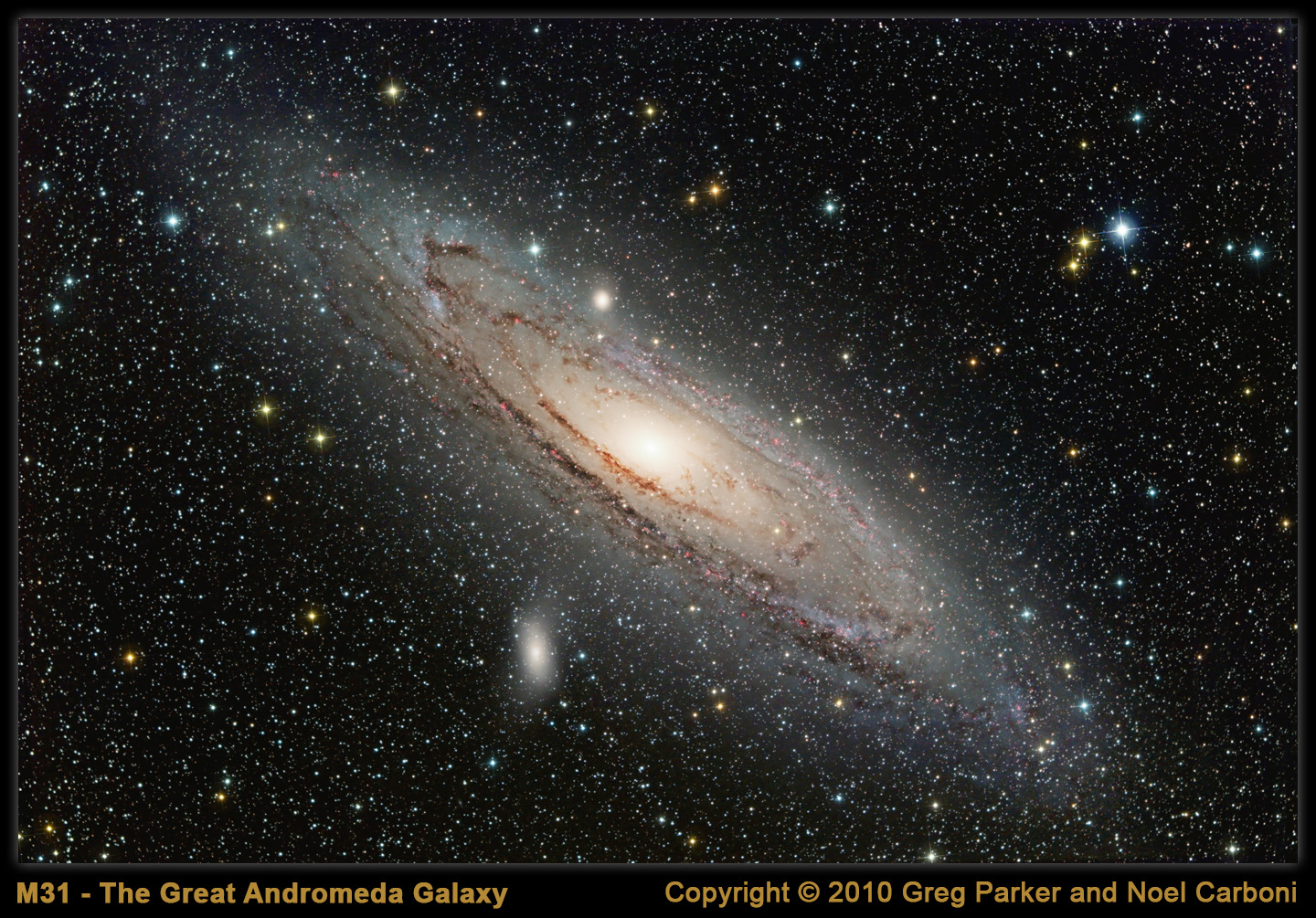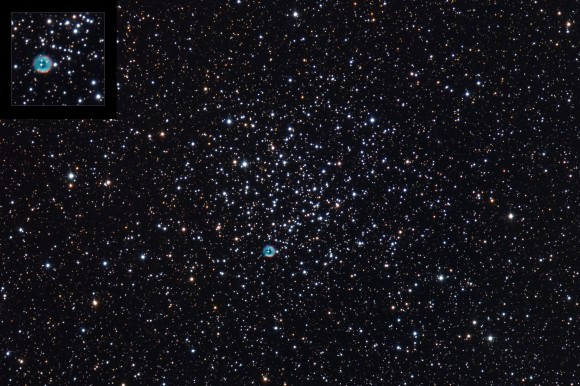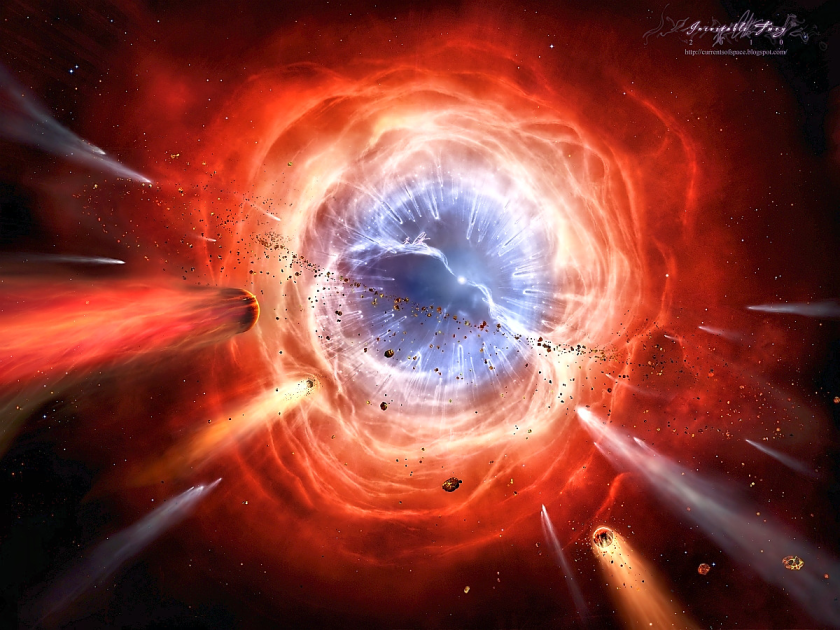Textbooks often cite that planetary nebulae (PNe, plural) represent an endstate for lower-mass single stars. But conversely, recent research suggests that most PNe stem from binary systems. The lowest mass star theorized to form the typical PN is near 1 solar mass, and thus without a companion the Sun may not surpass the mass limit required to generate the hot glowing (ionized) nebula typically tied to PNe. New research continues to question our original understanding of how the Sun’s life may end.
A new study spearheaded by G. Jacoby aimed in part to test that binary hypothesis by searching for PNe in star clusters occupying M31. The team remarked that, “while the binary interaction model explains some of the anomalies associated with the observed planetary nebula population, this theory awaits final confirmation.”
“The traditional theory states that the progenitors of PNe are low- to intermediate-mass single stars … However, this theory does not provide a natural explanation for the non-spherical morphologies observed for the great majority of PNe, nor their low rate of formation. For these and other inconsistencies, a new paradigm has been developed, wherein most PNe are shaped via the interaction … with a binary companion,” said Jacoby et al. 2013.

The advantage of finding a PN in a star cluster is that its fundamental parameters (e.g., progenitor mass, age, chemical composition) can be inferred from cluster membership. “It is difficult to probe the different PN formation scenarios using field stars, since one has almost no prior information about the properties of the PN progenitors. However, within star clusters, the situation is different, as both the age and metallicity of the progenitor can be accessed,” said the Jacoby team.
The problem with using PNe in the field is that their parameters are poorly constrained, in part because distances to the objects are notoriously uncertain. “… the situation in distance determinations for Galactic PNe is not very satisfactory. It is estimated that this distance scale can be accurate on average to 35-50%,” said Zhang 1995.
In recent years parallax measurements from the Hubble Space Telescope (Benedict et al. 2009) and the US Naval Observatory (Harris et al. 2007) have provided improved distances for some of the nearest PNe, and certain refined methods for estimating PNe distances may yield uncertainties as good as 20 to 30% (Frew and Parker 2006, Frew 2008, Stanghellini et al. 2008).
In many instances the distances to star clusters can be determined more precisely (better than 15%), which provides an impetus for finding cluster PNe. The team note that, “[In particular,] the low turnoff mass of old globular clusters (GCs) provides a tool with which to probe the [planetary nebula] binary formation scenario directly. Because GCs generally have turnoff masses less than 1 [solar mass] … Any PN detected in [globular clusters] must therefore come from an alternate evolutionary channel, such as a common-envelope interaction or a mass augmentation process (i.e., a stellar merger).” PNe are suspected to stem from 1 to 8 solar mass stars.

Jacoby et al. 2013 note that, “out of 130 Galactic GCs surveyed, only four host PNe: Ps 1 in M15, GJJC-1 in M22, JaFu1 in Pal 6, and JaFu2 in NGC 6441. Two of these PNe have high mass central stars more appropriate to PNe within [younger] open clusters, while the others have highly non-spherical nebulae. These facts, along with the observation that three of the four PNe are located in clusters that are rich in X-ray sources, suggest that interacting binaries play a role in the formation of cluster PNe.”
The team observed 467 star clusters in M31 with the WIYN telescopes, which are stationed at Kitt Peak. The team identified PNe by searching for their signature nebular emission lines. The team likewise examined whether the star clusters and PNe exhibited common velocities. “The better the velocity resolution of the survey, the easier it is to separate embedded PNe from chance superpositions, and to distinguish a clusterbound PN from other unrelated emission-line sources along the line of sight, such as H II regions, SNRs, and diffuse emission,” said Jacoby et al. 2013.
The team conclude that, “Of the 270 M31 globular cluster candidates observed with sufficient velocity precision, five show evidence for a candidate PN. Given the luminosity limits of the survey, the uncertainties in the velocity measurements, and the potential for confusion with other emission-line sources … These numbers are also marginally consistent with the binary hypothesis for PN formation …”
However, the Jacoby team notes that the, “… five PN candidates [identified] among the young [open] clusters in our sample … are likely superpositions.” A similar conclusion was reached by researchers surveying Galactic PNe found along the sight-line of open clusters (e.g., PN NGC 2438 in the cluster M46, Kiss et al. 2008).
Indeed, merely a few promising cases of PNe in Galactic open clusters were reported recently (e.g., PN Abell 8/Bica 6, PHR 1315-6555/Andrews-Lindsay 1; Bonatto et al. 2008, Parker et al. 2011), and a team led by astronomer Christian Moni Bidin (VVV survey) aims to soon publish another promising Galactic pair. However, further research is needed to independently confirm such cases given their importance.
![Jacoby et al. 2013 note, "The locations of our WIYN+Hydra fields and the targeted M31 clusters, superposed on a mosiaic of [OIII] images from massey et al. 2007. north is up, and east is to the left. Each 1 degree colored circle represents a different hydra setup (image credit: Jacoby et al. 2013/arXiv/ApJ, extracted by D. Majaess)](https://www.universetoday.com/wp-content/uploads/2013/04/jacoby_fig1-557x580.jpg)
Do most of the observed PNe stem from binary systems? Will the Sun become a canonical PN? Answers to those questions are presently uncertain, and additional research is needed to understand such a crucial stage in the evolution of stars like the Sun.
The Jacoby et al. 2013 findings have been accepted for publication in the Astrophysical Journal (ApJ), and a preprint is available on arXiv. The coauthors on the study are Robin Ciardullo, Orsola De Marco, Myung Gyoon Lee, Kimberly A. Herrmann, Ho Seong Hwang, Evan Kaplan, and James E. Davies. The interested reader desiring additional information will find the following pertinent: Jacoby et al. 1997, Moe and De Marco 2006, Bonatto et al. 2008, Parker et al. 2011, Kiss et al. 2008, Mermilliod et al. 2001, Zhang 1995, Benedict et al., 2009, Harris et al., 2007, Frew and Parker 2006, Frew 2008, De Marco et al. 2013, Stanghellini et al. 2008, Planetary Nebula Sampler.


Am visualizing a binary system where a large(r) star is stripping mass and magnetically slowing a smaller companion star, proto-star or mega-Jupiter. Eventually the smaller companion’s added mass causes a ‘sub-nova’ run away fusion in the larger star’s outer atmosphere…. half or more igniting? The explosion vaporizes most of the smaller companion and strips away the larger star’s outer atmosphere… blowing matter into space in the expanding shock wave. Eeeyup,,, I can see that happening.
Planetary Nebula have always been a favorite in MY telescope(s). I remember that seeing a Planetary Nebula for the first time was one of those “AH HAA!” moments. Just like my first comet or galaxy? Ahh yes..
Hi Aqua, “Planetary Nebula have always been a favorite in MY telescope(s)!”, I’m an avid admirer of M57 (the ring nebula), although M27 is likewise neat. However, globular clusters are my favorite to view, especially with Nagler eyepieces =)
Dan.
Visitors stopping by my roadside astronomy turnout up the mountain are usually shown Globular clusters first…. unless there’s a comet or other event? My FAVORITE Globulars have Planetary Nebula in them! M22, M15, NGC 6441 and Palomar 5!